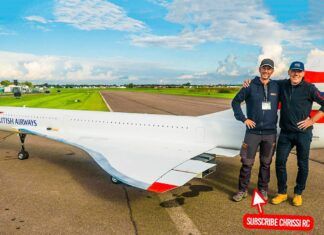The seven-seat jet has reached 43,000 feet and 412 knots so far in 240 hours of flight testing, and is expected to have a range of over 1,000 nautical miles, according to Honda’s preliminary figures. Final specifications, as well as a price point, will be forthcoming later this year. The two GE-Honda HF118 turbofan engines are mounted on pylons extending vertically from the inboard section of the wings. The company says the result is better outside and inside for aerodynamics and ergonomics, respectively. The jet’s distinctive features, which include a “natural laminar-flow” wing and nose, “help it achieve far better fuel efficiency, larger cabin and luggage space and higher cruise speed than conventional aircraft in its class,” according to the company’s news release. Fujino made clear that Honda intends to find its place among the growing choices in the small-jet field. “We emphasize three key attributes — performance, quality, and price,” that will resonate with buyers, he said. To see how that translates, stay tuned.

































